Introduction: The Power of Patience in Stock Market Investing
In 2005, an investor named Rajesh bought 100 shares of a little-known IT company for Rs 1,000 each. He held onto them through market crashes, economic downturns, and even personal financial challenges. Fast forward to 2025, those same shares are now worth Rs 4,000 each, and Rajesh has seen his investment grow fourfold. That company? Tata Consultancy Services (TCS). Rajesh’s story isn’t unique—it’s a testament to the power of long-term investing.
In a world obsessed with quick gains and day trading, the buy-and-hold strategy often gets overlooked. But as Rajesh’s experience shows, patience can be your greatest ally in the stock market. By choosing the right stocks and holding them for the long term, you can ride out volatility and unlock substantial wealth.
Table of Contents
So, why should you care about long-term investment stocks, especially in today’s fast-paced market? Because it works. And in this article, we’re going to show you exactly how. We’ve handpicked six stocks—three largecaps and three midcaps—that analysts are bullish on for the long haul. With price targets ranging from Rs 450 to Rs 7,000 and potential gains of up to 27%, these stocks could be the cornerstone of your investment portfolio.
Stick with us till the end, and you’ll not only understand why these stocks are primed for growth but also how to evaluate similar opportunities for yourself. Let’s dive in.
What Are Largecap and Midcap Stocks?
Before we jump into the specific stocks, let’s make sure we’re on the same page about what largecap and midcap stocks are.
- Largecap Stocks: These are shares of large, well-established companies with a market capitalization (market cap) of over Rs 20,000 crore. Think of them as the “blue chips” of the stock market—stable, reliable, and often leaders in their industries. They tend to be less volatile and offer steady growth and dividends.
- Midcap Stocks: These are shares of medium-sized companies with a market cap between Rs 5,000 crore and Rs 20,000 crore. They’re often in a growth phase, expanding their market share or entering new markets. While they carry more risk than largecaps, they also offer higher growth potential.
Both categories have their place in a long-term investment portfolio. Largecaps provide stability, while midcaps add a dash of growth. Together, they create a balanced mix that can weather market ups and downs.
Why Invest in Largecap Stocks for the Long Term?

Largecap stocks are the backbone of any solid investment strategy. Here’s why:
- Stability: Large companies have proven business models and are less likely to go bankrupt. They’ve survived multiple economic cycles and are often household names.
- Dividends: Many largecaps pay regular dividends, providing a steady income stream even if the stock price fluctuates.
- Lower Volatility: While no stock is immune to market swings, largecaps tend to be less volatile than their smaller counterparts, making them ideal for risk-averse investors.
For example, during the 2020 market crash, largecap stocks like Reliance Industries and HDFC Bank recovered faster than many mid and smallcaps, thanks to their strong fundamentals.
Why Invest in Midcap Stocks for the Long Term?
Midcap stocks, on the other hand, are where the excitement lies. Here’s what makes them attractive:
- Growth Potential: Midcaps are often in the sweet spot of their growth cycle. They’ve established themselves but still have room to expand, which can lead to significant stock price appreciation.
- Diversification: Adding midcaps to your portfolio can reduce risk by diversifying across different company sizes and sectors.
- Emerging Leaders: Today’s midcaps could be tomorrow’s largecaps. Investing early in these companies can pay off handsomely.
Take Trent, for instance. Once a midcap, it has grown rapidly and is now a key player in India’s retail sector. Early investors have seen substantial returns.
Top 3 Largecap Stocks for Long-Term Investment
Now, let’s get to the meat of the article: the six stocks that analysts are recommending for long-term gains. We’ll start with the largecaps.
1. Bajaj Finance
Overview: Bajaj Finance is a leading non-banking financial company (NBFC) in India, specializing in consumer finance, SME lending, and wealth management. With a market cap of over Rs 3.5 lakh crore, it’s a heavyweight in the financial sector.
Why It’s a Good Long-Term Investment:
- Market Leadership: Bajaj Finance dominates the consumer finance space, with a strong presence in both urban and rural markets.
- Digital Transformation: The company has invested heavily in digital platforms, making it easier for customers to access loans and manage finances.
- Consistent Growth: Over the past decade, Bajaj Finance has consistently grown its loan book and profits, even during economic slowdowns.
Analyst Targets: Analysts have set a target price of Rs 7,500 for Bajaj Finance, implying a 25% gain from its current price of Rs 6,000.
Financial Performance:
- Revenue Growth: In FY25, Bajaj Finance reported a 20% year-on-year revenue growth.
- Profit Margins: The company maintains healthy net interest margins (NIMs) of around 10%, well above industry averages.
Risks:
- Regulatory Changes: NBFCs are subject to strict regulations, and any changes could impact profitability.
- Economic Downturns: A slowdown in consumer spending could affect loan disbursements.
“The finance sector in India is poised for growth due to increasing digital adoption and financial inclusion.”
— Analyst, Motilal Oswal Financial Services
2. Titan
Overview: Titan is a consumer discretionary giant, known for its jewelry, watches, and eyewear brands. With a market cap of Rs 2.7 lakh crore, it’s a leader in India’s lifestyle segment.
Why It’s a Good Long-Term Investment:
- Brand Strength: Titan’s brands, like Tanishq and Fastrack, are household names with strong customer loyalty.
- Expansion: The company is expanding into new categories like wearables and eyewear, diversifying its revenue streams.
- Consumer Spending: As India’s middle class grows, so does demand for Titan’s products.
Analyst Targets: Analysts have set a target price of Rs 3,800 for Titan, suggesting a 26.7% gain from its current price of Rs 3,000.
Financial Performance:
- Sales Growth: Titan’s jewelry segment saw a 15% sales increase in Q1 FY26.
- Profitability: The company’s EBITDA margins have improved to 12%, thanks to cost-cutting measures.
Risks:
- Competition: The jewelry market is highly competitive, with both organized and unorganized players.
- Raw Material Prices: Fluctuations in gold prices can impact margins.
3. TCS
Overview: Tata Consultancy Services (TCS) is India’s largest IT services company, with a market cap of Rs 14.5 lakh crore. It provides consulting, technology, and outsourcing services globally.
Why It’s a Good Long-Term Investment:
- Global Presence: TCS serves clients in over 46 countries, reducing its dependence on any single market.
- Digital Transformation: The company is at the forefront of digital services, helping clients with cloud migration, AI, and automation.
- Consistent Performance: TCS has delivered steady revenue and profit growth for years, making it a reliable pick.
Analyst Targets: Analysts have set a target price of Rs 5,000 for TCS, implying a 25% gain from its current price of Rs 4,000.
Financial Performance:
- Revenue: TCS reported a 10% year-on-year revenue growth in FY25.
- Client Additions: The company added 20 new clients in Q4 FY25, boosting its order book.
Risks:
- Currency Fluctuations: As a global company, TCS is exposed to exchange rate risks.
- Talent Retention: The IT sector faces high attrition rates, which could impact service delivery.
Top 3 Midcap Stocks for Long-Term Investment
Now, let’s turn our attention to the midcaps. These stocks offer higher growth potential but come with a bit more risk.
1. Trent
Overview: Trent is the retail arm of the Tata Group, operating popular brands like Westside and Zudio. With a market cap of Rs 18,000 crore, it’s a leading player in India’s organized retail sector.
Why It’s a Good Long-Term Investment:
- Store Expansion: Trent is rapidly expanding its footprint, with plans to open 100 new stores by 2026.
- Brand Strength: Westside and Zudio are well-loved by Indian consumers for their quality and affordability.
- Growing Middle Class: As disposable incomes rise, more Indians are shopping at organized retail outlets.
Analyst Targets: Analysts have set a target price of Rs 1,900 for Trent, suggesting a 26.7% gain from its current price of Rs 1,500.
Financial Performance:
- Same-Store Sales Growth: Trent’s same-store sales grew by 12% in FY25.
- Profitability: The company’s operating margins improved to 8%, driven by higher sales volumes.

Risks:
- Economic Slowdown: A dip in consumer spending could hurt retail sales.
- Competition: The retail sector is highly competitive, with both online and offline players vying for market share.
2. Godrej Consumer Products
Overview: Godrej Consumer Products is a midcap FMCG company with a market cap of Rs 15,000 crore. It’s known for brands like Cinthol, Goodknight, and Hit.
Why It’s a Good Long-Term Investment:
- Diversified Portfolio: Godrej has a strong presence in personal care, household insecticides, and hair care.
- International Expansion: The company derives over 40% of its revenue from international markets, reducing its reliance on India.
- Innovation: Godrej invests heavily in R&D, launching new products to meet changing consumer needs.
Analyst Targets: Analysts have set a target price of Rs 1,500 for Godrej Consumer, implying a 25% gain from its current price of Rs 1,200.
Financial Performance:
- Revenue Growth: Godrej’s revenue grew by 8% in FY25, driven by strong performance in its international business.
- Market Share: The company gained market share in the household insecticides category.
Risks:
- Raw Material Costs: Rising input costs could squeeze margins.
- Currency Risks: As an international player, Godrej is exposed to exchange rate fluctuations.
“Consumer goods companies with strong brands and distribution networks are well-positioned to benefit from India’s consumption story.”
— Economist, ICICI Securities
3. Emami
Overview: Emami is a midcap FMCG company with a market cap of Rs 7,000 crore. It’s famous for brands like BoroPlus, Navratna Oil, and Fair and Handsome.
Why It’s a Good Long-Term Investment:
- Brand Equity: Emami’s brands are deeply entrenched in Indian households, especially in rural areas.
- Distribution Network: The company has a vast distribution network, reaching over 4,000 towns and cities.
- Focus on Health and Wellness: Emami is tapping into the growing demand for ayurvedic and natural products.
Analyst Targets: Analysts have set a target price of Rs 750 for Emami, suggesting a 25% gain from its current price of Rs 600.
Financial Performance:
- Sales Growth: Emami’s sales grew by 10% in FY25, driven by strong demand for its healthcare products.
- Profitability: The company’s EBITDA margins improved to 25%, thanks to cost optimization.
Risks:
- Competition: The FMCG sector is crowded, with both local and multinational players.
- Changing Consumer Preferences: Shifts in consumer tastes could impact demand for certain products.
Comparison of the 6 Stocks
To make it easier for you to compare these long-term investment stocks, here’s a table summarizing their current prices, analyst targets, and potential gains:
| Stock | Category | Current Price (Rs) | Target Price (Rs) | Potential Gain (%) |
|---|---|---|---|---|
| Bajaj Finance | Largecap | 6,000 | 7,500 | 25 |
| Titan | Largecap | 3,000 | 3,800 | 26.7 |
| TCS | Largecap | 4,000 | 5,000 | 25 |
| Trent | Midcap | 1,500 | 1,900 | 26.7 |
| Godrej Consumer | Midcap | 1,200 | 1,500 | 25 |
| Emami | Midcap | 600 | 750 | 25 |
As you can see, all six stocks offer potential gains of around 25-27%, making them attractive for buy-and-hold investors.
Sector Distribution of the Recommended Stocks
It’s also important to note the sectors these stocks belong to, as diversification across sectors can reduce risk:
| Sector | Stocks Included |
|---|---|
| Finance | Bajaj Finance |
| Consumer Goods | Titan, Godrej Consumer, Emami |
| IT | TCS |
| Retail | Trent |
This mix ensures you’re not overly exposed to any single sector, spreading your risk across finance, consumer goods, IT, and retail.
Real-Life Example: The Power of Holding TCS
To illustrate the power of long-term investing, let’s look at TCS. If you had invested Rs 1 lakh in TCS in 2010, your investment would be worth over Rs 10 lakh today—a tenfold increase. This is the magic of compounding and staying invested in quality stocks.
Of course, past performance doesn’t guarantee future results, but TCS’s consistent growth, global expansion, and leadership in the IT sector make it a prime candidate for similar long-term success.
How to Evaluate Stocks for Long-Term Investment
While the six stocks above are excellent picks, it’s crucial to know how to evaluate long-term investment stocks yourself. Here are some key metrics to consider:
- P/E Ratio: The price-to-earnings ratio helps you determine if a stock is overvalued or undervalued compared to its earnings.
- Dividend Yield: For income-focused investors, a high dividend yield can provide steady cash flow.
- Revenue Growth: Look for companies with consistent revenue growth, as this indicates a healthy business.
- Debt Levels: Companies with low debt are less risky, especially during economic downturns.
- Competitive Advantage: Does the company have a moat, like strong branding or proprietary technology?
For example, Bajaj Finance has a competitive advantage due to its digital lending platform, which sets it apart from traditional banks.
Risks Involved in Long-Term Stock Investment
No investment is without risk, and it’s important to be aware of potential pitfalls:
- Market Volatility: Stock prices can fluctuate wildly in the short term, but long-term investors must stay the course.
- **Economic Downturns *Economic Downturns*: Recessions can impact company earnings and stock prices.
- Company-Specific Risks: Poor management decisions or industry disruptions can hurt individual stocks.
- Regulatory Changes: New laws or regulations can affect certain sectors, like finance or healthcare.
However, by diversifying across largecaps and midcaps, you can mitigate some of these risks.
FAQ Section
Here are some frequently asked questions about long-term stock investment:
- What are largecap and midcap stocks?
Largecap stocks are sharesshe shares of large companies with market caps above Rs 20,000 crore, known for stability. Midcap stocks are medium-sized companies with market caps between Rs 5,000 crore and Rs 20,000 crore, offering growth potential. - Why invest in largecap stocks for the long term?
Largecap stocks provide stability, regular dividends, and lower volatility, making them ideal for conservative investors. - What makes midcap stocks attractive for long-term investment?
Midcap stocks offer higher growth potential and the chance to invest in emerging industry leaders. - How do I start investing in these stocks?
Open a demat account, research the stocks, consult a financial advisor, and invest through a brokerage platform. - What are the risks involved in long-term stock investment?
Risks include market volatility, economic changes, company performance issues, and regulatory shifts.
Conclusion: Secure Your Financial Future with These Stocks
Long-term investing isn’t about timing the market—it’s about time in the market. By choosing quality stocks like Bajaj Finance, Titan, TCS, Trent, Godrej Consumer, and Emami, you’re positioning yourself for steady growth and wealth creation. With analyst targets suggesting up to 27% gains, these stocks offer a compelling opportunity for patient investors.
Imagine the peace of mind knowing your portfolio is built on solid, expert-recommended stocks. Picture yourself retiring comfortably, your wealth secured by the power of compounding. That’s the promise of the buy-and-hold strategy.
The key to success is diversification, research, and staying invested through market cycles. So, take the first step today—consult with your financial advisor or start researching these long-term investment stocks to build a robust portfolio.
Call-to-Action: Start building your wealth with these expert-recommended stocks today!





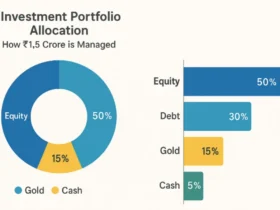


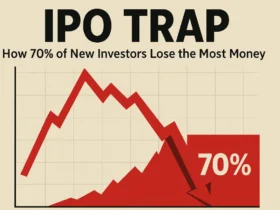
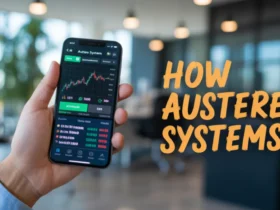







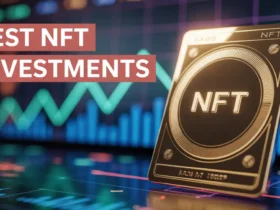


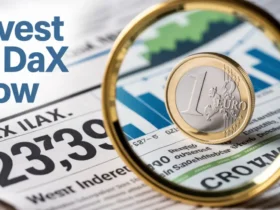


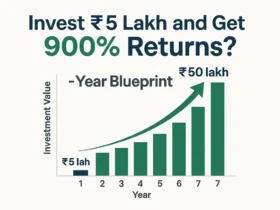

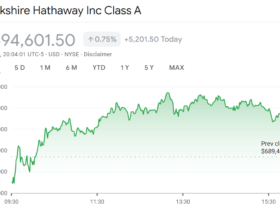




Leave a Reply